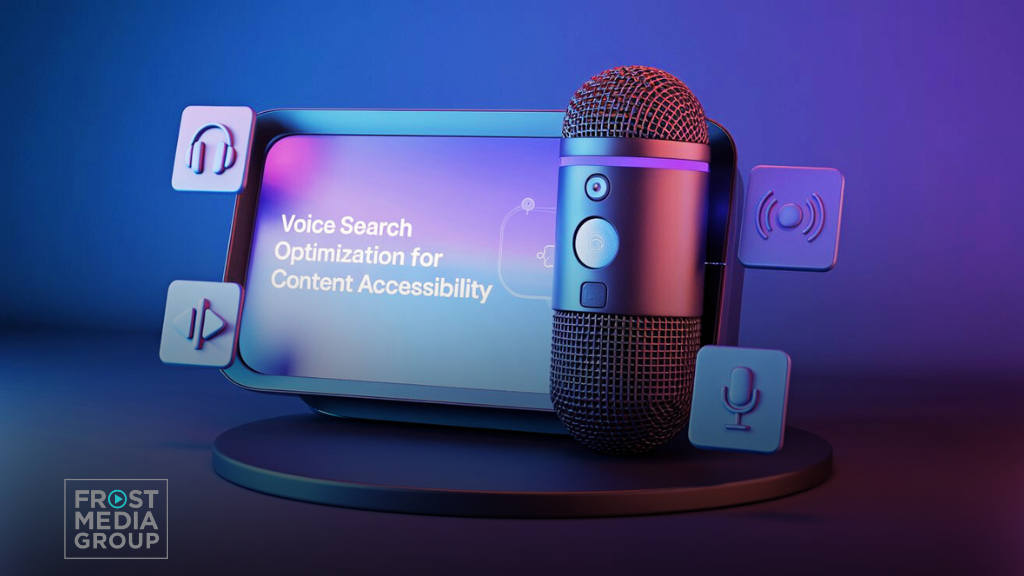Voice Search Optimization: Making Your Content Accessible to AI Assistants
In today’s rapidly evolving digital landscape, voice search has emerged as a transformative force in how consumers interact with technology. With the proliferation of AI-driven assistants like Siri, Alexa, and Google Assistant, understanding and implementing it optimization is crucial for businesses aiming to enhance their content’s accessibility and visibility. This article explores the significance of voice search, actionable strategies for optimization, and the technical aspects that can help organizations remain competitive in an AI-centric world.
Why Voice Search Matters in Today’s AI-Driven World
The Rise of Voice-Activated Devices and AI Assistants
The adoption of voice-activated devices is skyrocketing, with over 50% of adults using voice search daily. This trend reflects a significant shift in user behavior, as consumers increasingly prefer the convenience of hands-free interaction. Voice assistants have become integral to daily tasks, making it essential for businesses to optimize their content for these platforms.
How Voice Search Is Changing User Behavior
Voice searches are inherently more conversational than traditional text searches. Users tend to ask full questions rather than typing short keywords, which necessitates a shift in content strategy to accommodate this natural language. For instance, instead of searching for “best pizza,” a user might ask, “What is the best pizza place near me?” This change highlights the need for brands to understand user intent and adapt their content accordingly.
Benefits of Voice Search for Brands and Businesses
Optimizing for voice search not only enhances user experience but also improves overall SEO performance. Websites that are optimized for voice queries are more likely to appear in featured snippets—often the source of answers provided by voice assistants—thereby increasing visibility and driving organic traffic. Additionally, businesses that leverage voice search can better engage with customers by providing quick and relevant responses.
Key Strategies for Voice Search Optimization
Understanding and Implementing Natural Language Processing (NLP)
Natural Language Processing (NLP) is pivotal in understanding how users phrase their queries. By incorporating NLP into content strategies, businesses can create more relatable and accessible content that mirrors everyday speech patterns. This approach not only improves engagement but also aligns with how voice assistants interpret queries.
Using Conversational Keywords and Long-Tail Phrases
Incorporating conversational keywords and long-tail phrases is essential for optimizing content for voice search. These keywords should reflect the way users naturally speak, making it easier for voice assistants to retrieve relevant information. For example, instead of focusing solely on “running shoes,” consider phrases like “best running shoes for flat feet” to capture specific user intents
Optimizing for Local Voice Search
Local searches are particularly prevalent in voice queries. Ensuring that your Google Business Profile is up-to-date with accurate information such as hours of operation and location can significantly enhance local visibility. Using location-specific keywords within your content will further improve your chances of appearing in local search results
Technical Aspects of Voice Search Optimization
Improving Site Speed and Mobile-Friendliness
Technical optimization plays a critical role in voice search success. Websites must be mobile-friendly and load quickly to meet user expectations. Google prioritizes fast-loading pages, which can directly impact rankings in voice search results. Techniques such as optimizing images, minimizing code, and leveraging browser caching are effective strategies to enhance site speed.
Creating Voice-Friendly, Concise Answers
Voice searches often require direct answers to specific questions. Structuring content to provide concise responses—such as using bullet points or numbered lists—can improve clarity and accessibility. This format not only aids users but also increases the likelihood of being featured in snippets used by voice assistants
Enhancing Content with Structured Data (Schema Markup)
Implementing structured data helps search engines understand the context of your content better. By using schema markup, businesses can improve their chances of appearing in featured snippets and enhance the accuracy of responses provided by AI assistants. Focus on schema types relevant to common queries, such as FAQs or How-To guides
Measuring Success and Staying Ahead
Tracking Voice Search Metrics and KPIs
To gauge the effectiveness of your voice search optimization efforts, it’s essential to track relevant metrics such as organic traffic from voice queries, engagement rates, and conversion rates. Tools like Google Analytics can help identify trends and areas for improvement
Adapting to AI-Driven Changes in SEO
As AI technology continues to evolve, so too must your SEO strategies. Keeping abreast of changes in user behavior and adapting your content accordingly will ensure that your brand remains competitive in an increasingly AI-driven landscape
Future Trends: Preparing for the Evolution of Voice and AI in Search
Looking ahead, businesses should prepare for emerging trends such as multi-modal searches that combine text, voice, and visual inputs. Additionally, personalizing user experiences through AI-driven insights will become increasingly important. By staying informed about these developments, organizations can refine their strategies to maintain relevance.In conclusion, optimizing content for voice search is no longer optional; it is a necessity for businesses seeking to thrive in an AI-centric world. By understanding user behavior, employing effective strategies, and leveraging technical optimizations, brands can enhance their visibility and engagement through voice-activated platforms. Embracing these changes will not only improve customer experience but also position businesses favorably within the competitive landscape of digital marketing.
